
How to Paddle Low Water
Ask any whitewater paddle boarder what they dream about and they'll likely tell you: big runoff and high water, swollen rivers with deep lines, fast wave trains that make your heart race...
Now, ask any whitewater paddle boarder what their nightmares are, and they'll probably tell you: shallow lines, an abundance of rocks, water moving slowly.
Like most things, paddleboarding doesn't need to be categorized into two ends of a spectrum. SUPing doesn't always need to be like a dream or like a nightmare. Often, it falls somewhere in the middle. This nuance can be determined by not only your mindset but by your gear setup as well.
Since it's July and we are moving out of high water season into low water season, Hala Gear ambassador Andy O'Brien gives some tips and tricks to turn shallow conditions into a technical paradise.
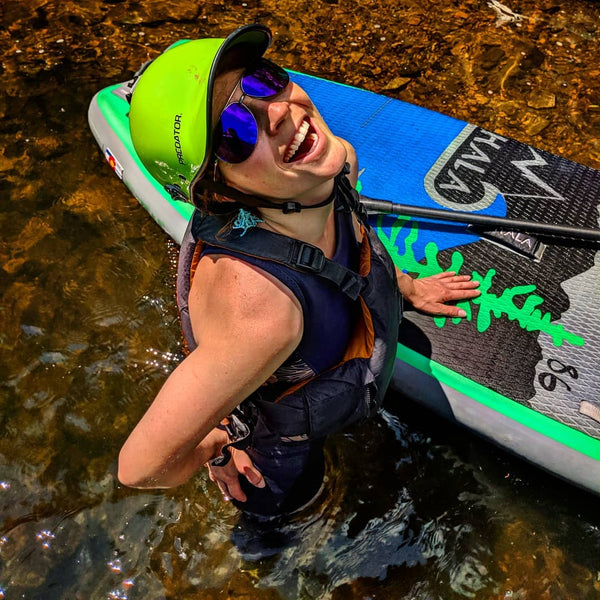
Board Choice
In whitewater SUPing, maneuverability is key. Since the water level may be down to inches, you should aim for a short and nimble board. As a 5’10” 180lb man, I exclusively use my Atcha 9’6” for max stability during runoff. When low water comes around, you’ll see me going back and forth between that and my Atcha 8’6".
The Atcha 86 is a smaller board that packs a big punch. At 34" wide and 8 and a half feet long, this SUP is small enough to fit into the tightest of lines. This narrowness important during low-flows because you'll need to go where the water goes (of course, avoiding strainers and sieves). You'll notice a difference in stability between an Atcha 96 and an Atcha 86, but a wave is less likely to knock you off a board in low water than in high water. It's all relative.
These two Atchas come with a Stompbox 2.0, which is a fully retractable 9" fin, and a set of 2 click fins that you can personalize for any water level.
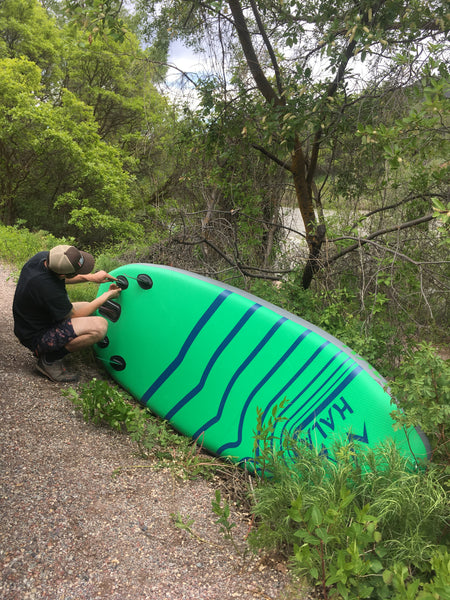
Fin Setup
The next thing to consider is your fin set up because when the water is shallow, you're gonna hit rocks. The StompBox is a game-changer in this arena. I paired it with the orange low-pro click fins, which in my opinion are a must in low water scenarios. I run these more than any other fins in my quiver.
Because you'll need to maneuver across the river to follow the best flows (safely), turning is key. With the surface area of the low pro fins stretched out lengthwise, you'll get some serious benefits – like the ability to track and enough bite to engage a turn.
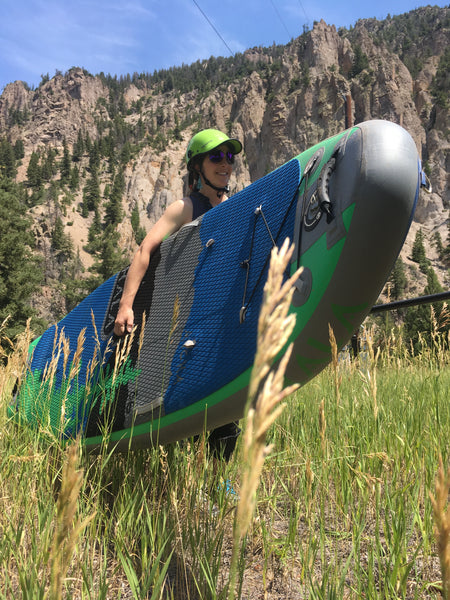
Paddle
As far as your paddle is concerned, you will test the durability of it during low flows. This is when my Grafik River Carbon pulls double duty. The 10ply blade lets me brace off the bottom as well as directly on rocks. Many times I have found myself with no water on one or the other side and decided that the closest grabbable feature like a rock, branch, or sand is fair game to keep me moving.
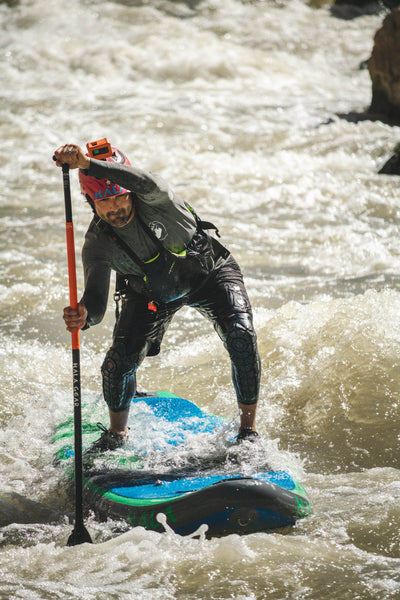
Body Armor
The last gear to don in low flows (besides the normal whitewater setup like a PFD, helmet, shoes, and leash) is protection and padding of the breakable parts. For many whitewater paddlers, body armor has become the norm. I wear G-form knee-shin, hip, and butt pads. Elbow pads are a good idea as well.
Technique
Now with gear out of the way, let’s focus on technique, particularly the differences and adjustments you’ll need to make in a low flow scenario.
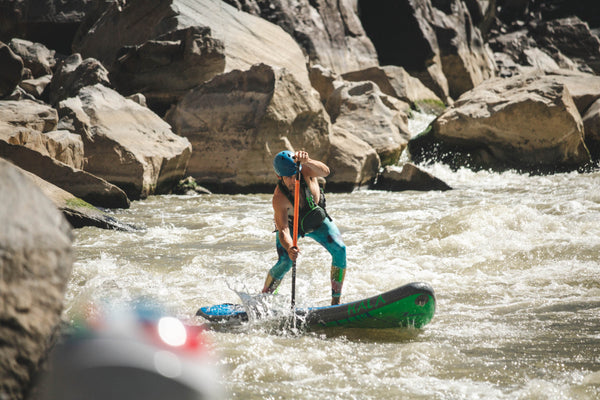
Stance
Your stance, and where you’re standing on the board will need to become much more fluid. Lightning-quick adjustments are needed to keep yourself in the limited channels of water. Complete transfers (or ferries) from river left to river right happen all the time.
Surf stance, and your switch version, are heavily relied on. While this may sound intimidating in writing, remember that at low water, the river is much less pushy and you are less likely to fall off your board from a wave splashing on you.
Using the Foot Index
When one of your feet steps back, you'll wanna feel the slightly raised part of the deck. This is called the foot index. It’s crucial for knowing where you’re standing in relation to the fins. Use the foot index to step back into position without looking down.
While in surf stance, with your foot on the foot index, you can practice throwing a paddle stroke and feel your board spin like a top. Your board will spin even easier if you’re all the way back on the Stomp Pad, located on the back of the board. There are a few paddle strokes you can throw to make yourself spin, like a draw or cross-bow stroke on toe-side or a sweep stroke on the heel side. Which one you decide while on the river will have to fit the circumstance you are in.
Get comfortable riding normal and goofy. The ability to stand/paddle switch will help with all paddling, not just low water. This style of board handling is all performed when there is actually enough water to be that far back and not fully bottom out.
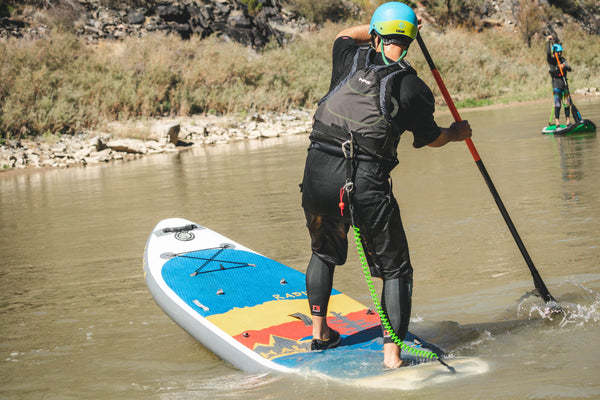
Utilize River Rocker
When bottoming out becomes an issue, and not just the occasional fin hit, it’s time to change it up again. This is where Hala’s river rocker profile saves the day. As you feel the hangup happening, step forward until your weight is in front of the center handle.
Typically, I’ll keep one foot at the handle and one out in front. When your weight shifts forward, the fins will almost completely disengage from the water allowing you to ‘ride out’ the shallows. If you do this and you’re still dragging, time to switch sports til next season.

Dismount Accordingly
Along with all this added movement on your board, there comes the skill of rapidly getting on and off your board.
If you’re paddling a channel where the water will no longer float you with your weight on the board, you can jump/dismount too nearby rocks/logs/ground while allowing the board to float through. When this occurs, I leap from my board to whatever I intend to land on while considering the friction I’ll have. Is it wet, dry, muddy, etc?
Once I land I reach for my leash to direct my board from behind. While learning this, you wanna come to a full stop and decide how to aline the board for your next move.
After mastering that, the advanced option is to dismount then remount in one motion. Personally I use this technique in all levels of water, mostly out of enjoying myself and partially out of necessity. Keep in mind, that dismounting can cause injury if you aren't looking where you are going.
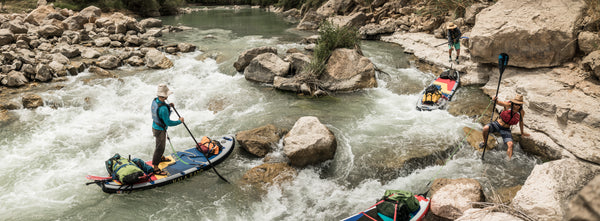
What a Drag
During extremely low flows you may need to drag your board to deeper water. The handles on Hala boards are great for getting this done
Use Height to Your Advantage
The heightened line of sight of a whitewater SUPer has is super beneficial when scouting low-level lines. You can look further ahead than seated craft, like a kayak, to find the channel with the most water. Most of the time there will be only one channel with enough water to float through. Your low water route finding will get better with practice and will evolve with the water you want to push.
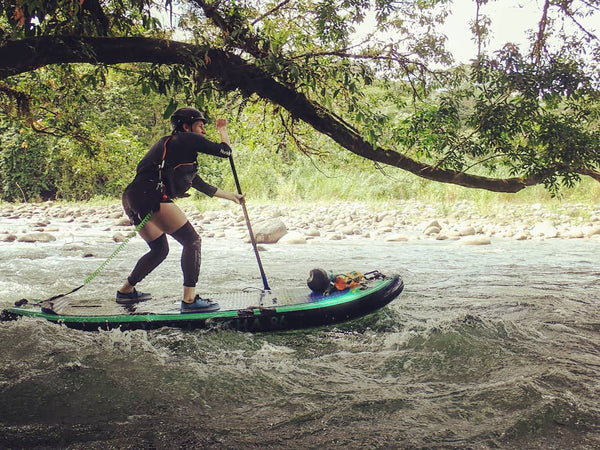
Where To Go
The Arkansas headwaters near Buena Vista is my home stretch of water. The runoff season for the Ark lasts around 3-5 months. With the gear and techniques I’ve mentioned, the paddling season is extended to 7-8 months.
If you want to extend your season even longer, invest in it is possible to run the Ark year-round.
Low water is the perfect time to learn and push yourself. You can truly make the river your playground. Hala's whitewater board designs completely changed the game of what can be paddled!

Andy O'Brien (and his alter-ego Royal Blue) is an Ambassador for Hala Gear. He lives in Salida, CO.

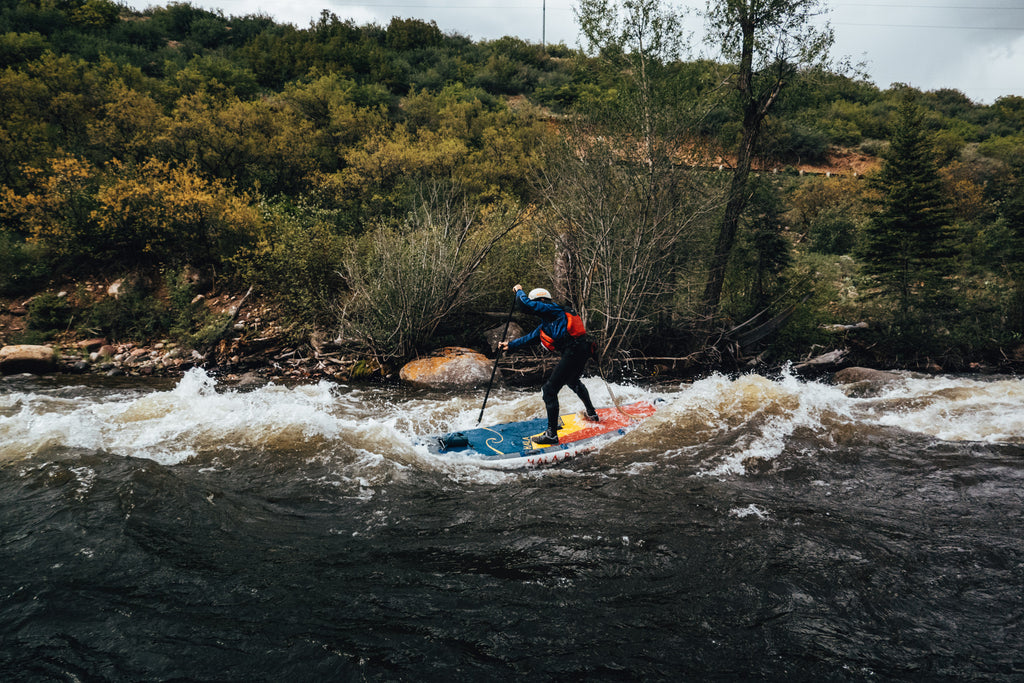


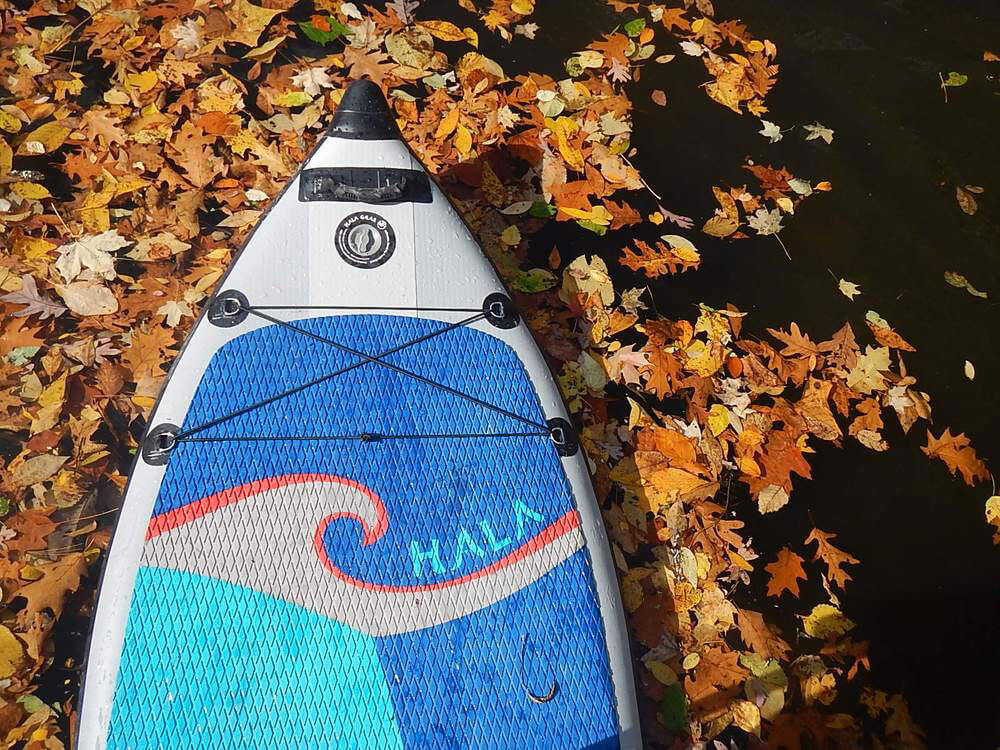
Leave a comment
This site is protected by hCaptcha and the hCaptcha Privacy Policy and Terms of Service apply.